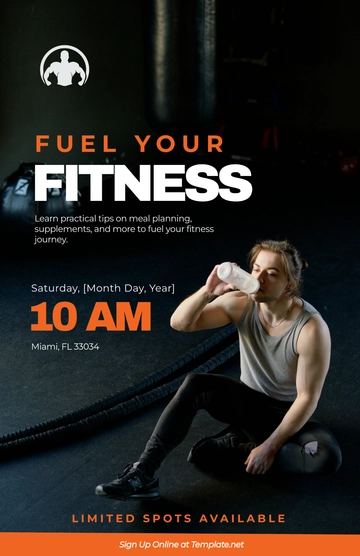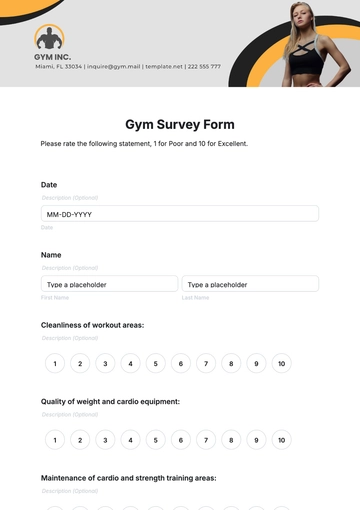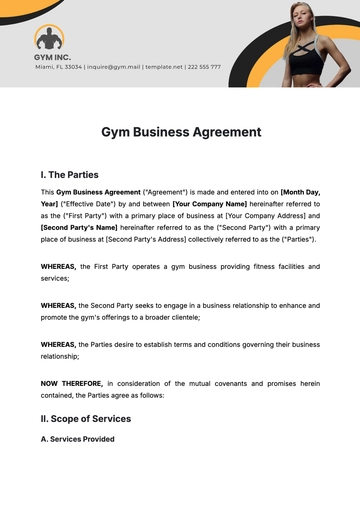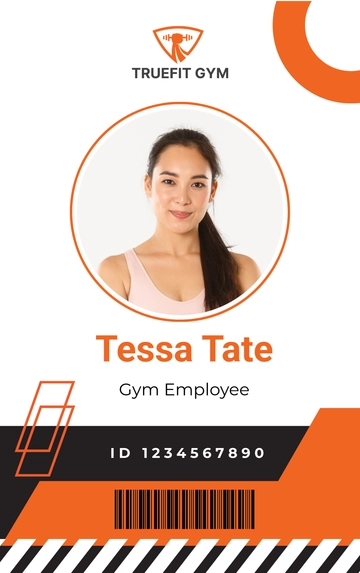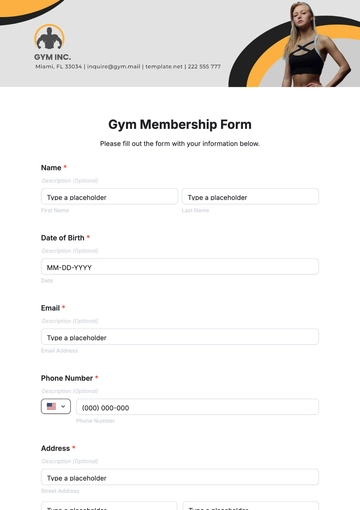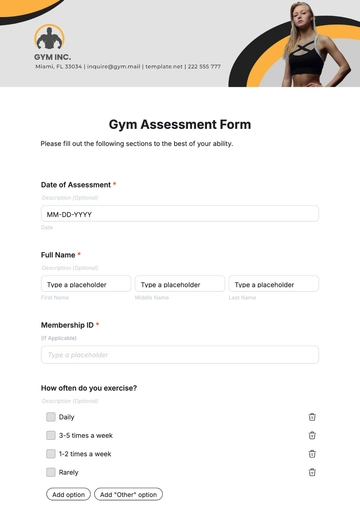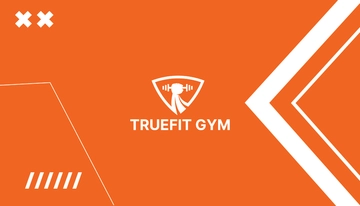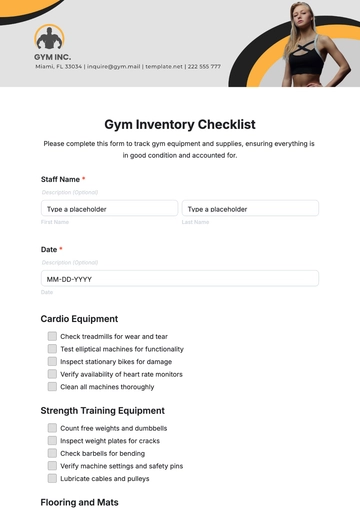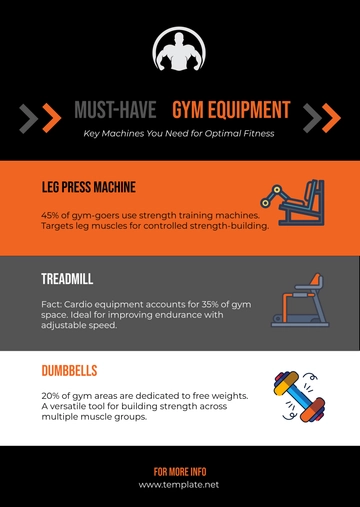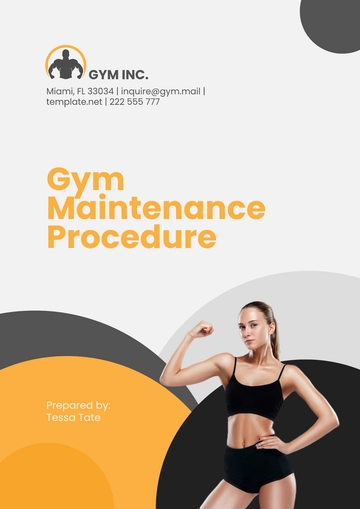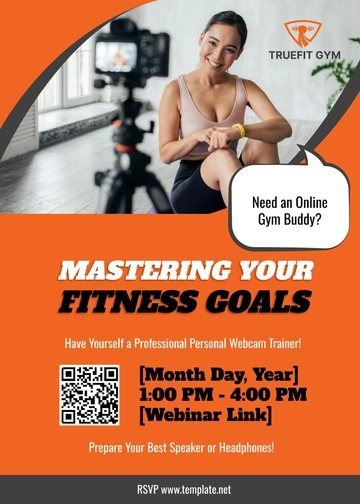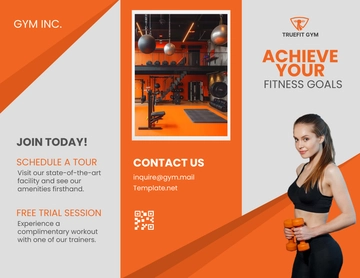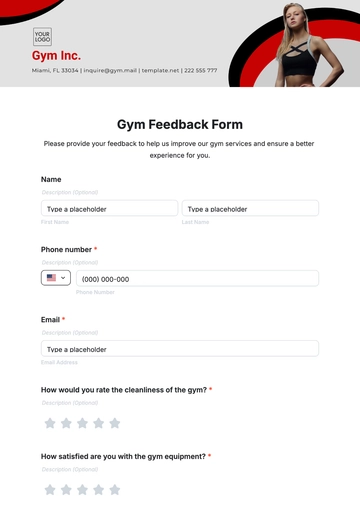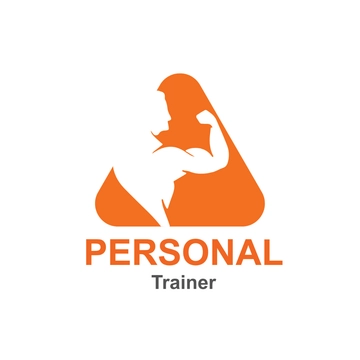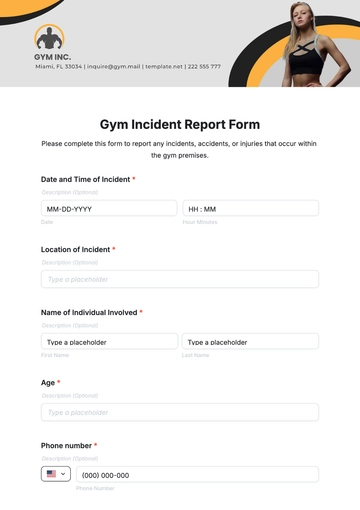Free Gym First Aid Training Guide
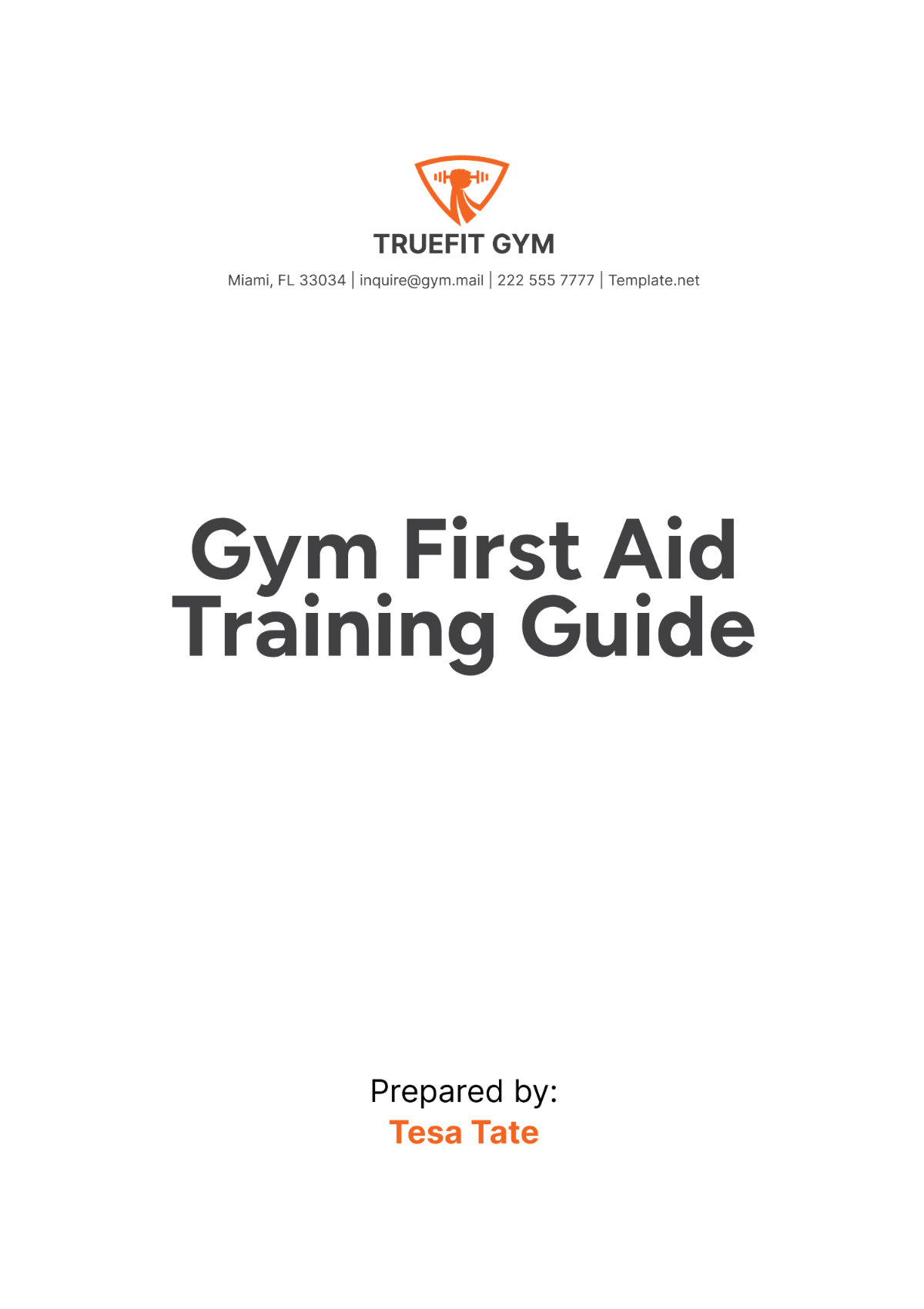
I. Introduction
Our Gym First Aid Training Guide is designed to equip our staff with the knowledge and skills necessary to respond effectively to medical emergencies within our gym facility. The purpose of this guide is to ensure the safety and well-being of our members and staff by providing comprehensive first aid training. This guide covers essential first aid techniques, procedures, and protocols relevant to the gym environment.
II. Importance of First Aid in a Gym
First aid plays a crucial role in the gym setting, where injuries and medical emergencies can occur unexpectedly. By having trained staff capable of providing immediate medical assistance, we can:
Reduce Response Time: Prompt response to injuries can prevent complications and promote faster recovery.
Ensure Safety: Staff trained in first aid can create a safer environment for members and visitors.
Enhance Member Confidence: Knowing that our staff are trained in first aid increases member confidence and trust in our facility.
Compliance: Meeting regulatory requirements and ensuring compliance with safety standards.
III. Basic First Aid Techniques
A. Assessment and Prioritization
Effective assessment and prioritization of injuries are crucial for providing timely and appropriate care. Steps include:
Assess the Scene: Ensure the area is safe for both the victim and yourself. Look for potential hazards like broken glass, electrical wires, or fire.
Assess the Injured Person: Check responsiveness by tapping the person's shoulder and asking loudly if they are okay. If unresponsive, shout for help and call emergency services (911).
ABCs: Airway, Breathing, Circulation: Ensure the airway is clear by tilting the head back and lifting the chin. Check for breathing by looking, listening, and feeling for breaths. If no breathing, start CPR immediately.
Assess Circulation: Check for signs of severe bleeding (life-threatening bleeding requires immediate attention).
B. CPR (Cardiopulmonary Resuscitation)
CPR is a critical skill for responding to cardiac emergencies. Steps include:
Check Responsiveness: Tap and shout, "Are you okay?"
Call for Help: Shout for someone to call 911 and get an AED.
Open the Airway: Tilt the head back and lift the chin.
Check for Breathing: Look, listen, and feel for breaths for no more than 10 seconds.
Begin Chest Compressions: Place the heel of one hand on the center of the chest, between the nipples. Place the other hand on top of the first hand. Lock elbows and use your upper body weight to push straight down. Perform compressions at a rate of 100-120 per minute, allowing the chest to recoil fully after each compression.
Give Rescue Breaths: Pinch the nose shut. Take a normal breath, cover the person’s mouth with your mouth, and give 2 rescue breaths, each lasting 1 second.
Continue CPR: Continue cycles of 30 chest compressions and 2 rescue breaths until help arrives or the person starts breathing.
C. Choking
Procedures for assisting a choking victim involve:
Assess the Severity: Determine if the person can speak or cough.
Perform Abdominal Thrusts (Heimlich Maneuver): Stand behind the person and place your arms around their waist. Make a fist with one hand and place it above the navel. Grasp the fist with your other hand and give quick, inward and upward thrusts. Repeat thrusts until the obstruction is dislodged or the person becomes unresponsive.
If the Person Becomes Unresponsive: Lower the person to the ground and start CPR.
D. Bleeding and Wound Care
Effective management of bleeding and wounds is crucial. Steps include:
Apply Direct Pressure: Use a clean cloth or sterile bandage and apply direct pressure on the wound to control bleeding. Maintain pressure until bleeding stops.
Elevate the Injured Area: Raise the injured limb above the level of the heart, if possible, to reduce blood flow to the area.
Apply Dressing and Bandage: Clean the wound with mild soap and water, if possible, and cover with a sterile dressing. Secure the dressing with a bandage or adhesive tape.
Monitor for Signs of Shock: Keep the person calm and monitor for signs of shock, such as pale or clammy skin, rapid breathing, and confusion.
E. Musculoskeletal Injuries
Guidelines for treating musculoskeletal injuries, such as strains and sprains, include:
Rest: Advise the person to rest the injured area and avoid putting weight on it.
Ice: Apply ice wrapped in a cloth to the injured area for 15-20 minutes every 1-2 hours for the first 48 hours.
Compression: Use an elastic bandage to apply compression to the injured area to reduce swelling.
Elevation: Elevate the injured limb above the level of the heart to reduce swelling.
Refer for Medical Evaluation: Advise the person to seek medical evaluation if there is severe pain, inability to bear weight, or significant swelling.
F. Medical Emergencies
Response procedures for common medical emergencies, such as seizures or allergic reactions, include:
Seizures: Protect the person from injury by moving nearby objects away. Do not restrain the person. After the seizure, turn the person onto their side to keep the airway clear.
Allergic Reactions (Anaphylaxis): Administer epinephrine auto-injector (EpiPen) if available and trained to do so. Call emergency medical services (911) immediately. Monitor the person's breathing and vital signs until help arrives.
IV. Equipment and Resources
A. First Aid Kit
Our gym is equipped with comprehensive first aid kits located at the front desk and in each workout area. Each kit includes essential supplies such as:
Bandages (various sizes)
Sterile gauze pads
Adhesive tape
Antiseptic wipes
Scissors and tweezers
Disposable gloves
CPR face mask
First aid manual
B. Automated External Defibrillator (AED)
An AED is located near the front desk and in the workout area. Protocols for using the AED include:
Immediately call emergency services (911) when someone collapses and is unresponsive.
Retrieve the AED and follow the voice prompts for use.
Apply pads to the person's bare chest as shown in the diagram on the AED.
Follow prompts for administering a shock if advised.
Continue CPR until emergency medical services arrive and take over.
V. Practical Scenarios and Drills
A. Slip and Fall Accident
In the event of a slip and fall accident, our response actions include:
Assess the person's condition and provide assistance to a safe sitting or lying position.
Check for injuries and apply appropriate first aid measures, such as applying ice for swelling or elevating limbs.
If there are signs of head injury or loss of consciousness, monitor closely and call emergency services if necessary.
Document the incident and inform management for further follow-up.
B. Muscle Strain or Sprain
For muscle strains or sprains, respond by:
Advising the person to rest the injured area and avoid further strain.
Applying ice wrapped in a cloth to the injury to reduce swelling.
Providing compression with an elastic bandage and elevating the injured limb.
Offering pain relief if needed and monitoring for any worsening symptoms.
C. Allergic Reaction (Anaphylaxis)
In case of an allergic reaction, particularly anaphylaxis:
Administer epinephrine using an auto-injector (EpiPen) if available and the person is known to have severe allergies.
Call emergency services immediately and continue to monitor the person's breathing and vital signs.
Comfort and reassure the person while waiting for emergency medical assistance.
Gather information about the allergen and previous reactions for medical professionals.
D. Cardiac Arrest
If someone experiences cardiac arrest, our actions include:
Immediately initiate CPR by performing chest compressions and rescue breaths.
Assign someone to call emergency services (911) and retrieve the AED.
Follow the AED's voice prompts for administering shocks and continue CPR until EMS arrives.
Document the incident, including AED usage and CPR procedures, for follow-up and review.
VI. Review and Update
Our Gym First Aid Training Guide is a dynamic document that undergoes regular review and updates to ensure its effectiveness and alignment with best practices. The review and update process will occur annually. Reviews include assessing the relevance of content, updating procedures based on feedback and new guidelines, and verifying the adequacy of equipment and resources.
- 100% Customizable, free editor
- Access 1 Million+ Templates, photo’s & graphics
- Download or share as a template
- Click and replace photos, graphics, text, backgrounds
- Resize, crop, AI write & more
- Access advanced editor
Discover the Gym First Aid Training Guide Template on Template.net. This editable and customizable template is essential for training gym staff in emergency response. Tailor it effortlessly in our AI Editor tool to teach CPR, first aid techniques, and injury management. Ideal for gym managers prioritizing safety and preparedness to ensure a secure environment for members.
